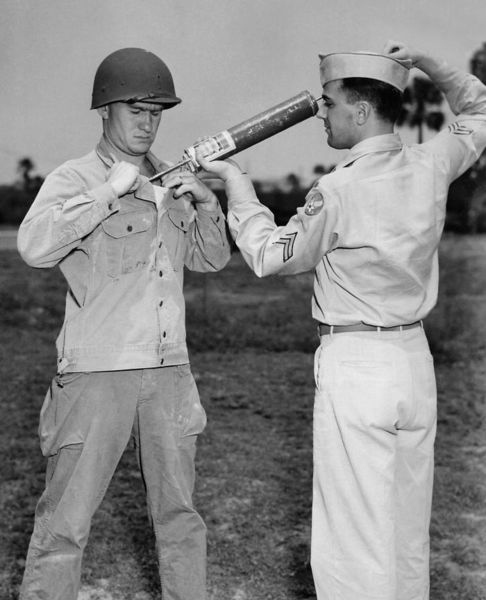Typhus historical perspective
|
Typhus Microchapters |
|
Diagnosis |
|---|
|
Treatment |
|
Case Studies |
|
Typhus historical perspective On the Web |
|
American Roentgen Ray Society Images of Typhus historical perspective |
|
Risk calculators and risk factors for Typhus historical perspective |
Editor-In-Chief: C. Michael Gibson, M.S., M.D. [1] ; Associate Editor(s)-in-Chief: Aditya Ganti M.B.B.S. [2]
Overview
The first description of typhus was probably given in 1083 at a convent near Salerno, Italy. In 1546, Girolamo Fracastoro, a Florentine physician, described typhus in his famous treatise on viruses and contagion, De Contagione et Contagiosis Morbis. Before a vaccine was developed in World War II, typhus was a devastating disease for humans and has been responsible for a number of epidemics throughout history. These epidemics tend to follow wars, famine, and other conditions that result in mass causalties. The first reliable description of the disease appears during the Spanish siege of Moorish Granada in 1489. These accounts include descriptions of fever and red spots over arms, back and chest, progressing to delirium, gangrenous sores, and the stink of rotting flesh. During the siege, the Spaniards lost 3,000 men to enemy action but an additional 17,000 died of typhus. Typhus was also common in prisons (and in crowded conditions where lice spreads easily), where it was known as Gaol fever or Jail fever. Gaol fever often occurs when prisoners are frequently huddled together in dark, filthy rooms. Imprisonment until the next term of court was often equivalent to a death sentence. It was so infectious that prisoners brought before the court sometimes infected the court itself. Following the Assize held at Oxford in 1577, later deemed the Black Assize, over 300 died from Epidemic typhus, including Sir Robert Bell Lord Chief Baron of the Exchequer. The outbreak that followed, between 1557 to 1559, killed about 10% of the English population.
Historical perspective
- In 1083, typhus was first identified as a disease in Spain.
- In 1489, during the Spanish siege of Moorish Granada, the first reliable description of the disease was made.
- In 1546, Fracastoro extensively described the disease and distinguished it from plague in his book Contagione.
- In 1676, Von Zavorziz wrote a book on typhus called "The Infection of Military Camps".
- In 1739, Huxham stated typhus and typhoid as two different entities, later in the same year Boissier de Sauvages confirmed this and called it exanthematous typhus.
- In 1829, Louis, French clinician clearly differentiated typhus fever from typhoid fever.
- In 1836, Gerhard(United States) clearly distinguished the two diseases from each other based on pathologic findings.
- In 1909, Charles Nicolle for the first time described the role of lice bite in transmission of typhus. In 1928, he was awarded the Nobel Prize for his discovery.
- In 1916, Weil and Felix reported the isolation of a Proteus that was agglutinated by the sera of patients with typhus, which was the basis for the first serological test for the disease.
- In 1916, DaRocha-Lima isolated and identified Rickettsia prowazekii.
- In 1926, Maxcy described the various forms of typhus.
- In 1938, Starzyk demonstrated that patients are infected by the feces and not the bite of the louse.
- In 1922, Wolbach described the human histopathology of R prowazekii infection.[1]
- In 1938, Cox was successful in growing cell cultures of R prowazekii in embryonated eggs.[2]
- In 1940, Cox and Bell prepared an epidemic typhus vaccine based upon the use of tissue culture.
- In 1943–1944, during world war II DDT (a pesticide) was employed to control lice and typhus.
- In 1998, Andersson et al, sequenced the entire genome after much study of the fundamental mechanisms of R prowazekii's intracellular life and its effects on host cells.[3]
-
Civilian Public Service worker distributes rat poison for typhus control in Gulfport, Mississippi, ca. 1945.
-
A U.S. soldier is demonstrating DDT-hand spraying equipment. DDT was used to control the spread of typhus-carrying lice.
References
- ↑ Woodward TE (1971). "Typhus verdict in American history". Trans. Am. Clin. Climatol. Assoc. 82: 1–8. PMC 2441062. PMID 4997497.
- ↑ Cox, Herald R. (1938). "Use of Yolk Sac of Developing Chick Embryo as Medium for Growing Rickettsiae of Rocky Mountain Spotted Fever and Typhus Groups". Public Health Reports (1896-1970). 53 (51): 2241. doi:10.2307/4582741. ISSN 0094-6214.
- ↑ Andersson SG, Zomorodipour A, Andersson JO, Sicheritz-Pontén T, Alsmark UC, Podowski RM, Näslund AK, Eriksson AS, Winkler HH, Kurland CG (1998). "The genome sequence of Rickettsia prowazekii and the origin of mitochondria". Nature. 396 (6707): 133–40. doi:10.1038/24094. PMID 9823893.

